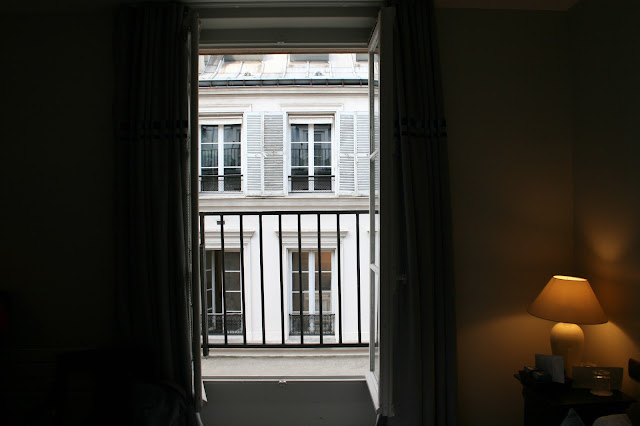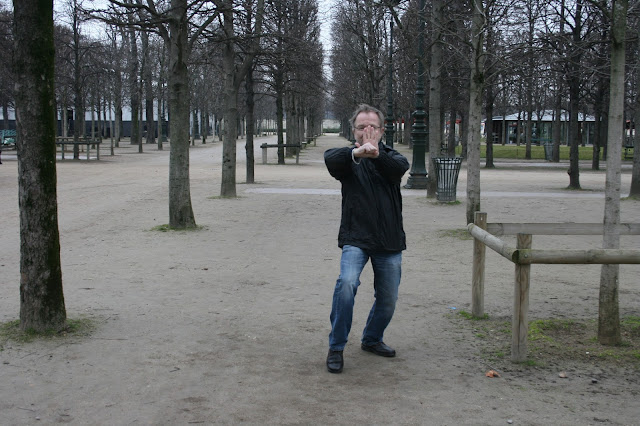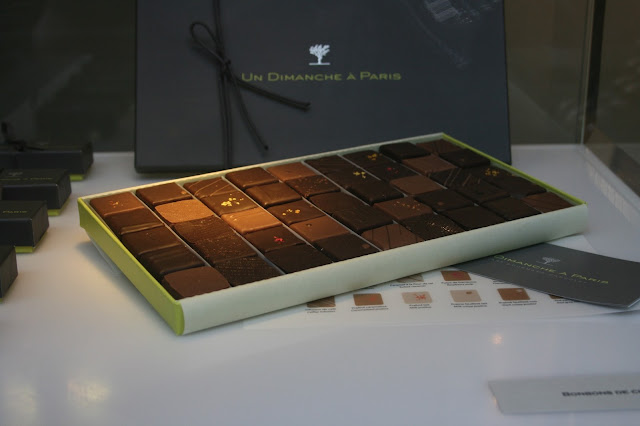As you can see, I was in Paris last week. Notice that electricity pylon behind me. It was far from my first visit to this inspiring city but it was the first time that I had been there just for pleasure. Parisian trips for me have mostly been either about work or I just passing through on my way to somewhere else.
This is strange considering how easy it is to get there these days on a Eurostar train that takes you straight there in a couple of hours from St Pancras station in London or even less if you can get to Ashford Station in Kent.
It was my first time on the Eurostar train and it felt in the great tradition of travelling, like an adventure.
Two hours later, I had been taken under the sea, across the Normandy countryside and served up in Paris at the Gare du Nord.
In case you are wondering about the sudden change on dress sense, the women on the right were English but the red beret and boots belong to a fashion model on her way to French Fashion Week.
I was on my way to the Hotel D’Orsay for a few days looking at paintings and seeing some of the other sights too.
My room had a very French balcony and a very French view.
I could also see just how close I was to the Musée D’Orsay with the World’s leading collection of Impressionist and Post-Impressionist paintings.
I was very near to the very smart Boulevard Saint Germain too, it’s the junction at the end of the little street where I was staying.
The Boulevard Saint Germain runs parallel with the River Seine along its famous Left Bank (Rive Gauche) and was once the home of much Existentialist café chatter from the likes of Jean-Paul Sartre and Simone de Beauvoir but these days it is better known for its clothes shops.
If you like French chocolate, how can you not, it is also a good place to get an Easter Egg – well if you can afford them. It was a feast in its own way just looking.
The Boulevard Saint Germain may have many smart designer establishments but it also has a statue
commemorating George Danton (1759-1794), one of the leaders of the French Revolution and also, in the end, one of its victims. He would end up being guillotined, like the French King and Queen, just round the corner from here at the Place de la Concorde, then named, with suitable enthusiasm, the Place de la Révolution.
So it was appropriate that on my arrival, I was greeted by hordes of protesters singing martial songs, carrying banners, waving flags and throwing smoke bombs.
Vive la Révolution! I thought. They were actually protesting about the new President Hollande’s employment laws that they think will erode workers’ rights. It was inspiring to hear mass voices singing The Red Flag and La Marseillaise with such blood-curdling vigour. We don’t have such rousing revolutionary songs back in Britain.
The protesters were still singing and marching when I went for a very necessary beer, coffee and salmon crêpe at a handy street-side restaurant. Vive la Révolution! I thought again, toasting the revolution with a glass of beer as the smoke bombs exploded around me.
I thought I should stay fit and alert here in President Hollande’s Paris so I continued my daily morning kungfu practice in the Tuileries Gardens.
Beginning with the Da Mo meditation exercises, then my taichi form, the 66 moves of Suang-Yang and finishing with my usual six White Crane kungfu patterns, I felt ready to take on the World if necessary.
It seemed like an appropriate place to do martial arts as around here in the Tuilerie Gardens, was the old Tuileries Palace where King Louis XVI was imprisoned prior to his execution and where later Napoleon Bonaparte lived in some style until he came a cropper too. The palace was destroyed by arsonist Communards during the Paris commune protests of 1871.
Mostly though during my time there, each morning, I was alone with a band of harmlessly urbane joggers and some friendly gardeners armed only with rakes. I was tempted to borrow one of those rakes for my seven-and-a half-foot-pole pattern but decided not to risk another revolution.
Later one morning, after I had been trying to sharpen up my lower crane blocks, I walked past the Louvre, one of the largest art galleries in the World and home, of course, to the Leonardo Da Vinci’s Mona Lisa. I’d decided that there just wasn’t time to do the museum justice this time even though I was staying just across the river from it. Next year perhaps. I carried on towards the Pont Neuf, Paris’s oldest bridge which you cross to get to the Île de la Cité, the island where the original Paris was built and still its medieval heart. It was in the middle ages, and is still today, a notorious site for vagabonds, pickpockets and sight-seers. I was still thinking about my lower crane blocks of earlier and how I needed to twist my wrist more on the downward stroke when I was surrounded by a blabbering group trying to distract me with a petition while one of them put a hand in my pocket. She recoiled rather quickly when she became the first person to receive my newly improved White Crane Lower Crane Block – my kungfu instructor would have been proud.
Safely over the bridge I headed for Notre Dame Cathedral, the seat of the Archbishop of Paris, a masterpiece of Gothic architecture, one of the first buildings in the world to have Flying Buttresses, those bits that look like they’re propping up the building from the outside (which they are doing) and allowing the ceilings to soar to the amazement of medieval visitors.
It was also the setting for Victor Hugo’s novel The Hunchback of Notre Dame (1831), – real title Notre Dame de Paris. I didn’t get to see Quasimodo but I often thought of him up there ringing the great bell, Emmanuel (1681) that is still working there in the bell tower. The book is a piece of fiction but Victor Hugo took pains to write precisely about the cathedral’s architecture and I felt I’d been there before after reading his great but sprawling work. The book is also a record of the old Paris, the one before the grid of broad and straight boulevards designed in the 1860s by Baron Haussmann (1809-1891) destroyed much of the city’s historic charm. Modern Paris is now very much Baron Haussmann’s city but these days it has an historic charm all of its own.
It is difficult to go into the Notre Dame Cathedral without thinking of Quasimodo, the bell-ringing hunchback, but the place is much more than an imaginary film set, it is still one of the most beautiful Gothic cathedrals in France even though it has been much restored after having a rough old time during the revolution when much of its decoration was destroyed and the building was renamed the Cult of Reason and then used as a food store.
I crossed another bridge understanding at last that Paris really is dominated by the River Seine so no wonder it has its reputation as the place for all those romantic walks along its banks.
After Notre Dame and thoughts about Baron Haussmann’s boulevards, it was good to arrive in the Latin Quarter where the streets are much less well-behaved.
The restaurants and cafés are a lot more affordable too.
This raclette, a traditional recipe from Savoy, betraying its proximity to Switzerland. It was my first raclette experience and, delicious as it was, I wondered if I would ever feel hungry again.
After lunch, I was certainly much too full to be tempted by this sensational but highly exclusive box of chocolates selling in a nearby shop for nearly 100 euros.
Even the Latin Quarter these days has its posh shops where your money will evaporate before your eyes.
The spirit of the old Latin Quarter survives though in places such as the legendary book shop Shakespeare And Company, opened in 1951 by a New Jersey American, George Whitman (1913-2011), a friend of Beat poets Ginsberg and Kerouak and the Parisian specialist in English language literature.
It is still a place where you can just go and read or have a very gallic conversation about very clever intellectual things.
There is never far to go either, if you want to chat, intelligently or not, over superb coffee.
It was easy to see most of the most famous Parisian landmarks on foot in one day so after the Latin Quarter, I walked back along the Boulevard Saint Germain in time to watch the sun set behind the Eiffel Tour from a vantage point by the Place de la Concorde not far from the site of the long vanished Madame Guillotine.
There was time too to stroll down that rather elegant motorway, the Champs-Élysées.
Wherever I walked, it was impossible to forget that I was in one of the most sophisticated, culturally rich and historically bloodied cities in the World. Tomorrow, I’ll tell you about my visit to the awe-inspiring gallery of 19th Century art, the Musée D’Orsay. Au revoir.




































